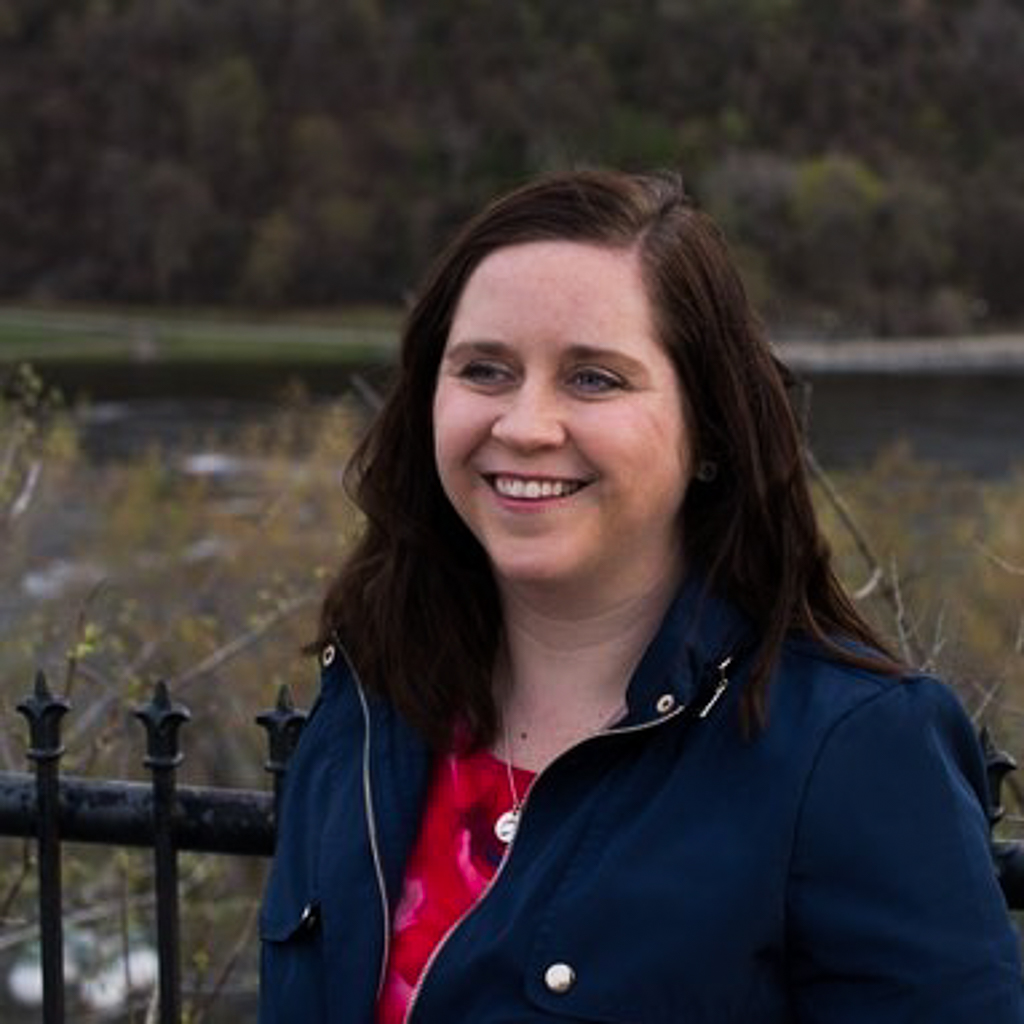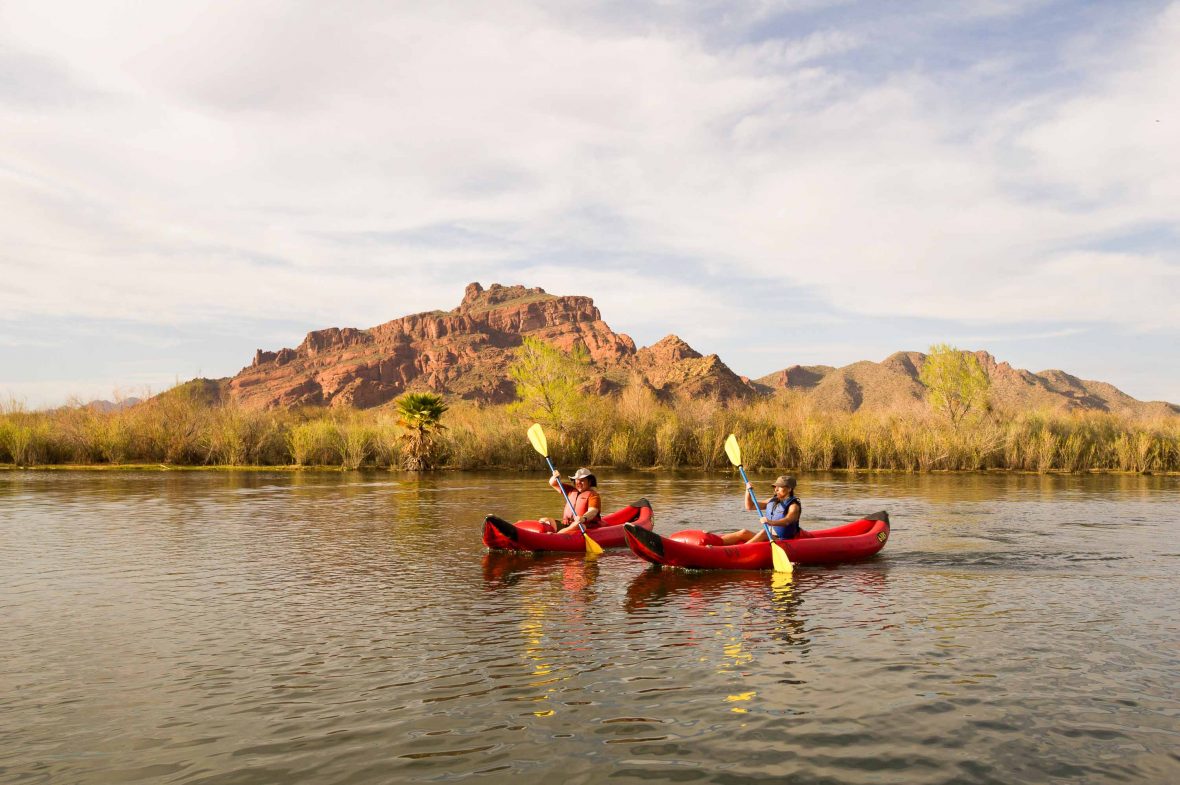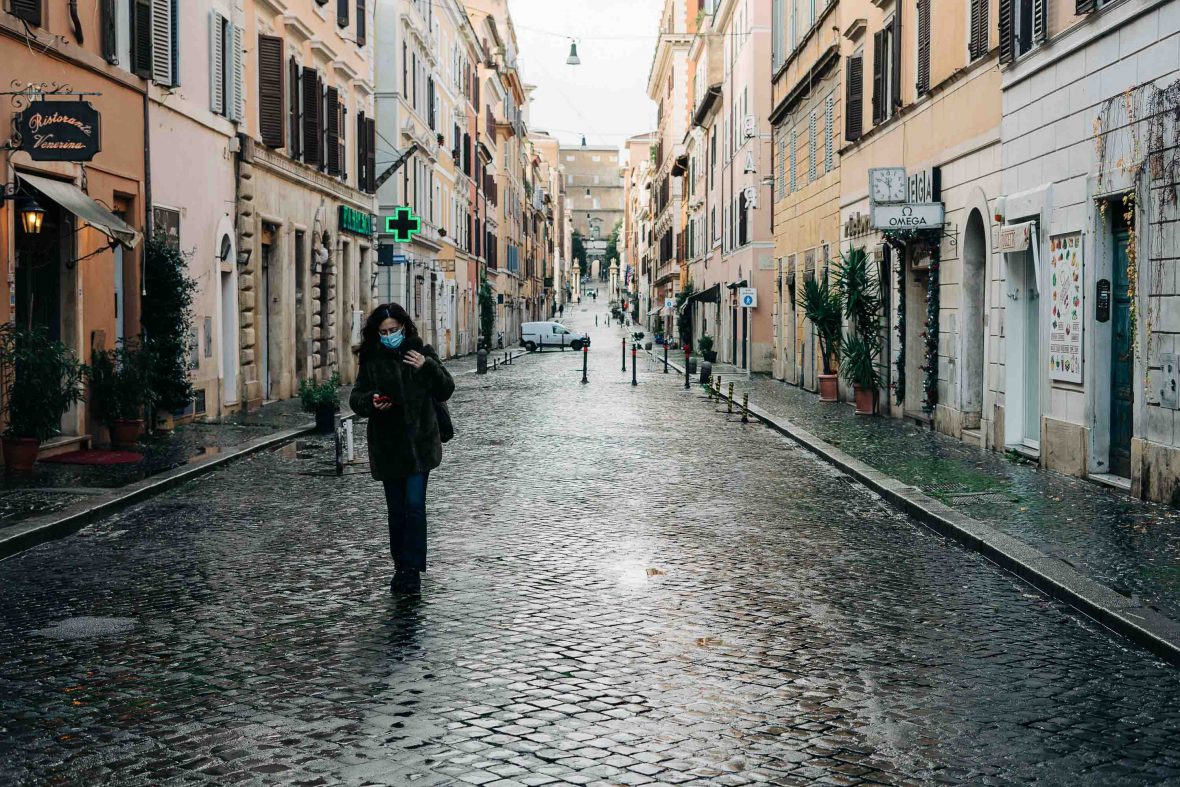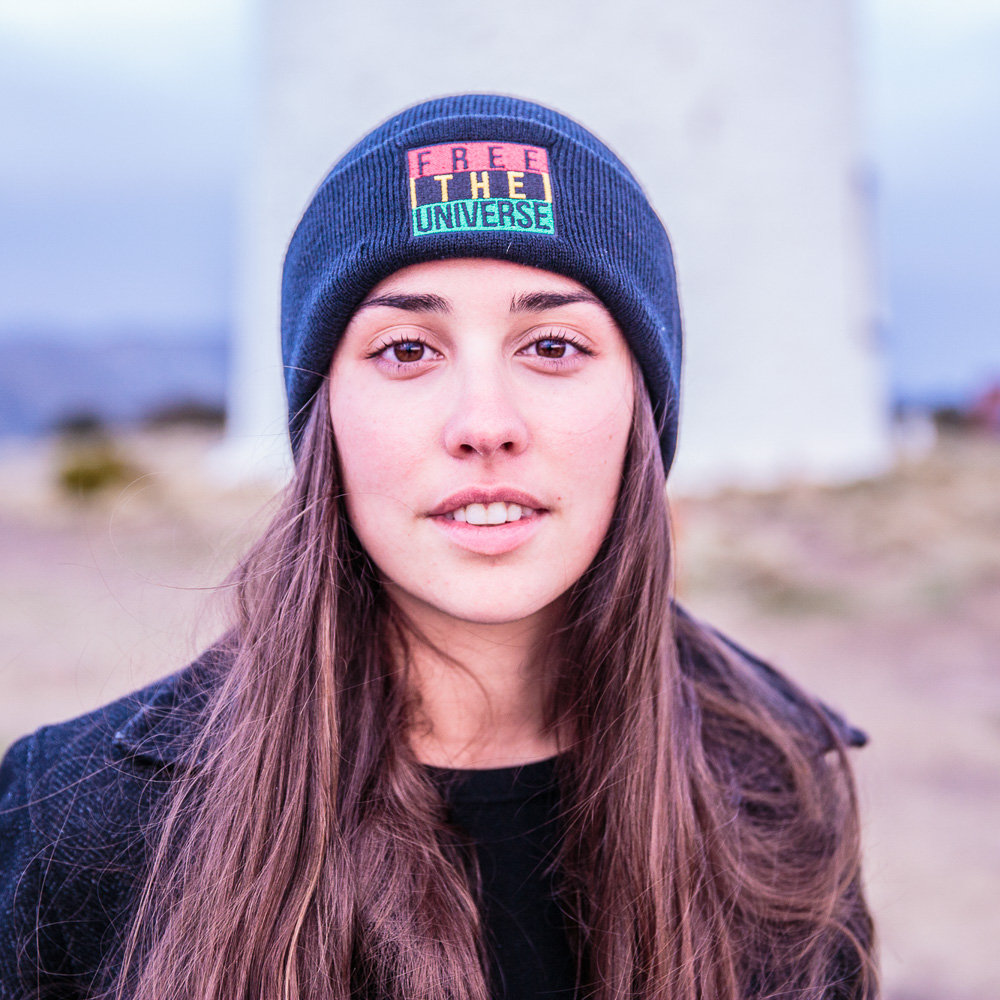
Through the pandemic, writer Fiona Tapp found her anxiety going through the roof, triggered by the most mundane things. Now, she’s exploring the edges of her comfort zone to calm those inner demons—and it’s working.


Through the pandemic, writer Fiona Tapp found her anxiety going through the roof, triggered by the most mundane things. Now, she’s exploring the edges of her comfort zone to calm those inner demons—and it’s working.
The blade of my paddle slices a path through the clear waters of Arizona’s Saguaro Lake. Carved through canyon walls and surrounded by an abundance of towering Saguaro cacti, this man-made Sonoran Desert Lake is a refreshing oasis.
An empty avenue of water opens ahead, and I lay my paddle across my lap and drift into stillness. Overhead, an osprey whistles. My fingers trace the rough grooves of the wooden paddle before I dip them into the water and let the droplets cool my skin. I lick my lips and taste the salty residue. The blooming white flowers of the queen of the night orchid cactus closed tight before dawn, but the sweet fragrance lingers on the breeze.
These kinds of immersive experiences, and being present and mindful, are part of why I find travel so enriching—but they’re also medicinal. Focusing on my senses grounds me. It’s also a trick I was taught to manage my anxiety—a condition that worsened during lockdown when travel, my main outlet for stress and tension, disappeared. As a travel writer, I understand that being able to travel far and wide is a huge privilege, but it’s not just about travel: Any adventure or time spent in nature can be helpful in managing feelings of anxiety. In fact, doctors in Canada can prescribe “nature therapy” to their patients as studies show even two hours a week spent outside can boost your mental wellbeing.

The irony is that during my career as a travel writer, I have taken part in activities that would make many people feel more than a little nervous. I have jumped off a 192-meter-high building in New Zealand, gone canyoning down a waterfall in Peru, navigated around unknown cities in the middle of the night, crossed a sky bridge connecting two mountain peaks, and slept overnight in an igloo at the cusp of the Arctic Circle. Each time, I felt nothing but gratitude and excitement.
Then, in March 2020, as was the case for so many of us, in different ways, everything changed. For me, that meant my calendar of planned trips was suddenly wiped clean. I had to pivot and take on different work whilst simultaneously looking after my son, who was no longer at school all day. Like lots of working parents, I found this change stressful. I felt I was failing in both roles.
Now that travel opportunities have returned, and restrictions have eased, I’m not the same carefree traveler I once was. I now find myself rehearsing for the unknown.
Despite all my adventuring around the globe, I was now anxious and troubled by mundane and everyday tasks. I questioned myself constantly, second-guessing my choices on things I knew how to do well; such as writing an article or teaching my son to read. I found Zoom calls with friends excruciating even though I regularly video-called interview subjects pre-pandemic without a worry. Coupled with these feelings of everyday unease was the overwhelming shared anxiety that the pandemic brought to us all.
I started to develop an illogical fear about having people in my home. At one point during the lockdown, we suffered a major flood, and the endless march of plumbers, carpenters, and electricians sent me into a spin. It was as though I had lost all ability to communicate with people and had become insular. And yet on work trips, I would be thrown together with a group of at least four to five journalists and PR professionals. We would eat together, travel together, visit attractions, and bond quickly, often becoming friends.
Now that I barely left my home, I found strangers made me uncomfortable. At some points during the lockdown, even our time outside, taking a walk was limited. I felt trapped and longed to be in a forest alone, on top of a mountain, paddling down a creek, anywhere but at home.
I’d get a stomachache, feel hot, become irritable and even tearful when I knew someone was scheduled to arrive. I proudly told my therapist that I had planned all the renovation appointments for times when my husband was at home, so I didn’t have to talk to anybody. She looked concerned and gently pointed out that I was simply avoiding the problem.
I know anxiety is incredibly common—it affects about 40 million adults in the US alone—and that talk therapy and medication can be very effective for the symptoms of anxiety. But I’ve also realized that simply avoiding my triggers isn’t always a good plan of action, especially if it means I miss out on a normal life.
But now that travel opportunities have returned, and restrictions have eased, I find I’m not the same carefree traveler I once was. I now find myself rehearsing for the unknown. It was when speaking to Dr. Joanne Frederick, a licensed professional counselor, who has over 25 years’ experience specializing in treating people with anxiety and depression, that she said that not only is this symptom common, but it can also form part of treatment. “Talking to yourself in a positive way, planning, rehearsing, and even distractions, can help with anxiety,” she told me. “Anxiety is when you’re worried about the future, but if we do grounding techniques, we’re moving away from the future, and we’re focusing on the here and now.”

Before getting in that kayak on the Saguaro Lake, I had run through the steps in my head, imagining all the possible scenarios that could play out. Most of them involved me not being able to get into the kayak—a baffling concern as I’ve paddled many times, including in competition for dragon boat for over seven years.
Once afloat (without incident, of course), I began mentally plotting my return and how I’d get back out of the kayak. These thoughts of the future make me feel neurotic and atypical, which starts a whole cycle of self-shame and spoils the activity because I can’t focus on the moment at hand. That’s why I try to zero in on the sensations I experience, to force myself to stay in the present.
As the pilot admitted he had no way to steer, I could feel the intense heat of the flame on my face, and I thought not of ‘what-ifs’ or potential calamities; only of how lucky I am to be here in this world at all.
Later on, that same day, our guides took us horseback riding. While I’ve ridden horses many times, including an especially perilous journey to Gocta Falls in northern Peru, this time I mentally rehearsed getting on the horse more times than I care to recall.
And then the worst actually happened.

My horse, Clark, tripped over a large rock and pitched forward, landing painfully on his knees and almost sending me skyward. I managed to hold on for dear life—whilst screeching—as the poor horse regained his footing. My heart racked against my ribs. I spread my fingers into his mane, stroking him gently and whispering words of support (as much for myself as for Clark). The worst thing I could imagine had happened.
It happened, and I was fine. I was fine. In fact, as I looked up at the afternoon shadows dancing upon the Bulldog Cliffs, I realized I was more than fine.
The next day, we woke early to chase the sunrise on a hot-air balloon ride 5,000 feet above the desert. As the pilot admitted he had no way to steer, I could feel the intense heat of the flame on my face, and I thought not of ‘what-ifs’ or potential calamities; only of how lucky I am to be here in this world at all. So what if I need a rehearsal every time I try something different? It’s been a hard couple of years for all of us; I think I can manage a little extra emotional baggage in my carry-on.






Can't find what you're looking for? Try using these tags: